Word of Mouth Marketing [What it is, Strategies, Types & More]
We constantly discuss the tools and products we use with our colleagues and friends. Occasionally, we also recommend some of these tools to our peers.
This process is known as word of mouth, and digital marketers recognize it as a capable marketing channel you can take advantage of to drive sales or increase brand awareness.
If you are interested in this strategy, our guide will cover everything you need to know about it.
What is Word of Mouth Marketing (WOMM)?
Word-of-mouth marketing (also known as WOMM or word-of-mouth advertising) is the set of techniques marketers use to encourage consumers to spread the word about the brand and its product. To put it in another way, the word-of-mouth effect is the case when people organically recommend a certain product or service to their friends during casual conversations.
Now that you have the word-of-mouth marketing definition clear, you might still have a question in mind – is it worth the effort? Let’s investigate it.
Why is Word of Mouth Marketing Important?
As a type of earned media, word of mouth is important and valuable for your brand.
First of all, we should not underestimate the ability of word of mouth to generate high-intent leads and convert them into paying customers. In fact, recommendations from friends increase the chances of people buying products by 400%.
The key factor behind this effectiveness is trust, as hearing positive reviews about a product from a friend or family member who has personally tried it feels very authentic and reliable.
Now, to further solidify our point, let us share a couple more statistics demonstrating the immense value that word of mouth brings to your brand.
5 Interesting Word of Mouth Marketing Statistics
Many pieces of research and surveys out there serve as factual evidence of the power of word-of-mouth. We have cherry-picked some of the key statistics for you to consider:
- Word of mouth is the most effective marketing channel, according to 64% of marketers that Semrush has surveyed.
- An Ogilvy Cannes study found that 74% of consumers consider word-of-mouth recommendations a critical factor in deciding to purchase a product.
- According to invesp, 28% of consumers have agreed that a recommendation from their friend has increased their brand affinity.
- Gallup found out that for 88% of consumers, word-of-mouth recommendations are more likely to influence their decision to buy a product than advertising.
- BrightLocal’s survey shows that for 88% of people, online reviews by other customers are as trustworthy as recommendations by their friends.
The evidence of WOM marketing value seems clear, so now, let’s understand the reasons behind its success by listing its key benefits.
5 Key Benefits of Word of Mouth Marketing
By taking advantage of the word-of-mouth effect and managing it, you can easily reach your marketing and business goals, as it comes with many benefits. Here are some of them.
Benefit #1: Builds trust around the brand
Word of mouth is about recommendations that consumers hear from people they trust the most – their friends, colleagues, and family. Therefore, increasing the number of people recommending your products will also increase your target audience’s trust in your brand.
Benefit #2: It’s free
Although encouraging word of mouth and managing it might take some time and resources from your marketing teams, by its nature, this strategy is organic and free – you do not directly pay the people who recommend your products to their peers.
Benefit #3: Brings loyal customers
This is one of the byproducts of the high level of trust you get with word-of-mouth recommendations.
The people that became your customers as a result of a friend’s referral trust you, and this trust directly translates to their loyalty and a better customer experience.
Benefit #4: Helps in building a community
When you have a word-of-mouth effect going around your brand, you will not only get more leads and potential customers but also create a community of loyal users who can actively engage with your brand and encourage others to join.
Benefit #5: Can boost sales
As we previously saw in the WOM marketing statistics section, these types of recommendations can influence consumers’ purchase decisions. Thus, if you manage the WOM effect around your brand right, you can potentially improve conversions and drive extra sales revenue for your company.
To sum up, the benefits we listed above make it clear that word-of-mouth marketing is something worth trying. But before discussing how to start a WOM campaign, let us first understand its types.
5 Powerful Word of Mouth Marketing Types
In real life, word of mouth is not limited only to people casually chatting and recommending products to each other. There are many other ways people can share their positive experiences and recommendations, and we have five of the most prominent ones for you here.
Type #1: Influencer marketing
Let’s begin with influencer marketing. It is the collaboration of brands with social media personalities and creators with an audience highly relevant to the brand’s products and services.
The power of influencers lies in their followers, who consider their opinions and recommendations trustworthy and authentic (more than 60% of consumers trust the recommendations their favorite influencers share). Thanks to such trust, these creators can influence the buying decisions of their audience (hence the term “influencer”).
To take advantage of this, digital marketers should find relevant influencers on social media platforms and ask them to showcase or promote their products in exchange for a payment or a free product sample.
Below is a typical case for a paid influencer post.
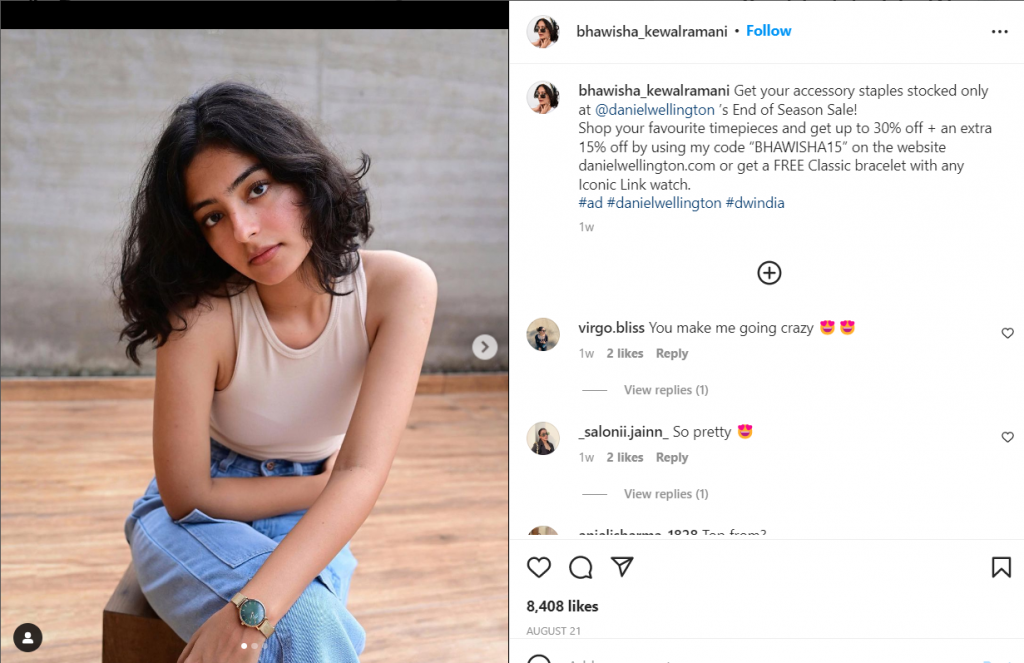
The person in the Instagram post is Bhawisha Kewalramani, a micro-influencer who has partnered up with luxury accessory brand Daniell Wellington to show off their watches and offer a special discount to her followers.
Type #2: Partner programs
A partner program is a cross-promotional strategy when two or more companies advertise each others’ brands and products through their marketing channels.
Among the many benefits of a partner program, the two key ones are your access to the audience of your partner company and the cost-effectiveness, as you are not spending any additional funds or time on this tactic.
Now let’s look at a partnership program in action.
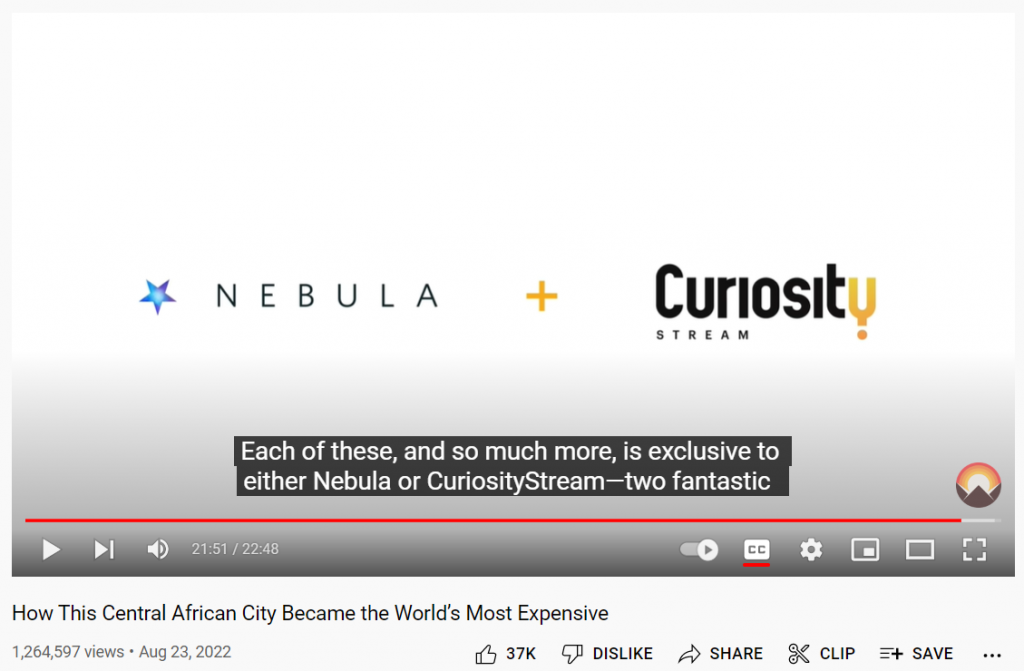
The video above is a documentary by YouTube channel Wendover Productions and its founder Sam, who has more than 3.5 million followers.
At the end of his video, Sam promotes a streaming service called Nebula. In exchange for it, Nebula promotes Sam’s documentaries that he has posted on its platform.
Type #3: Brand ambassador programs
Brand ambassador programs are the more traditional and long-term equivalents of influencer marketing.
What sets the brand ambassador program apart from other strategies is that:
- It is Long-term: unlike influencer campaigns that can have the scope of a single post or a couple of them, brand ambassadors stay and collaborate with you for months or even years.
- It is about celebrities: brand ambassadors are usually much more popular than an average influencer. We talk about celebrity influencers and regular television celebrities.
- It is rarely about sales: while influencer campaigns can both aim to increase brand awareness and drive sales, your collaboration with brand ambassadors is almost always about brand visibility and prestige.
We have seen examples of brand ambassador programs many times around us. Here is one popular example of it.
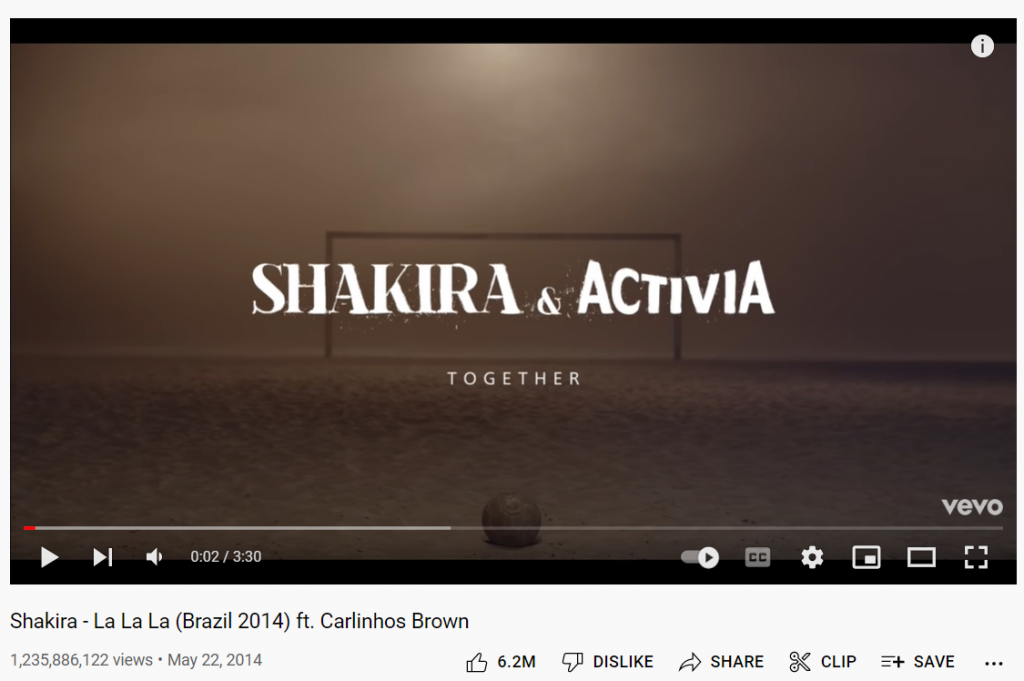
Most of us will recognize both the song and the Columbian singer that performs it.
Apart from being one of the FIFA World Cup 2014 official songs, Shakira’s hit “La La La” was also a promotion of Activia as she was the ambassador of the brand at that moment.
Type #4: User generated content (UGC)
Unlike the previous three strategies in our list, user generated content does not assume creating partnerships or cross-promotions. UGC is about the natural posts that ordinary users make where they talk about your brand or products.
The major benefit of UGC is your brand getting exposure among these users’ followers and social media friends without spending a penny.
Here is what user-generated content looks like.

The tweet above is not a result of an influencer marketing campaign or the author’s collaboration with SEO and digital marketing tool Ahrefs. Instead, it is a simple post where the author praises its new dark mode design.
Type #5: Referral programs
A word-of-mouth referral program is a strategy where you involve your users in promoting your products by giving them incentives in exchange for referring their friends to become your users.
Although many of your customers will end up recommending your product to their friends organically anyways, referral programs boost that process by offering incentives to the people who refer their peers, such as more features, increased limits, or discounts.
Now let’s look at a real-life example of a referral program.
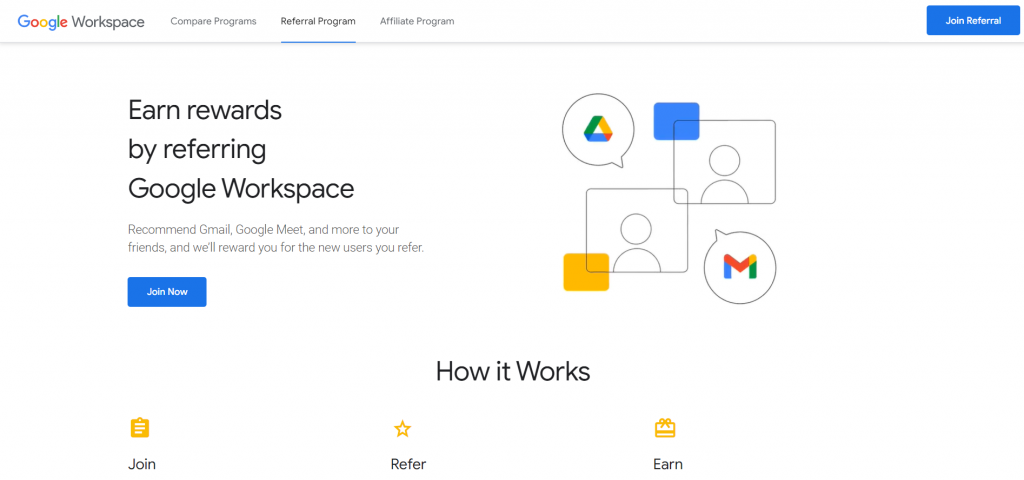
This one belongs to Google’s Workspace (a.k.a GSuite). As a workspace user, you can earn up to 200 free user seats for your account by referring your friends to become paid customers of this service.
To conclude, word of mouth is not only about people recommending your product to their friends during an in-person casual chat. There are many other well-defined forms of word-of-mouth marketing you can use to increase your brand exposure among your target audience.
Now, let’s move on to explaining how to create a WOMM campaign.
How to Build a Word of Mouth Marketing Campaign
Structure-wise, word-of-mouth marketing campaigns are not very different from other types of digital marketing campaigns, and you can create one by following the steps below.
Step #1: Research your audience
Every campaign starts with your buyer’s persona. You need to have a clear overview of the needs and interests of your target audience and know which channel or platform is most suitable for them (e.g., LinkedIn for B2B and Instagram for B2C).
Step #2: Decide your approach
There are many word-of-mouth strategies you can choose from, and it is your product type that will decide which one you settle on. For instance, influencer marketing and viral marketing work great for fashion and eCommerce, while you can consider affiliate marketing for B2B software sales.
Step #3: Promote
Finally, with your audience and approach clear, you can go ahead and start promotion. For example, if you do affiliate marketing, you need to promote your affiliate program among media owners. With referral programs, on the other hand, you will have to reach out to your existing users and promote among them.
But no matter how you choose to build your campaign and what kind of audience you target, there are pro WOM marketing tactics that can help you get the most out of these campaigns, and we have several of them for you coming up next.
7 Word of Mouth Marketing Strategies to Consider
When starting with word-of-mouth marketing, you might get the impression that affecting the way people talk about your product is very hard and out of your control.
Luckily, it is not the case, and there are many battle-hardened strategies that can help you boost your brand’s word-of-mouth promotion. Here are seven of them.
Strategy #1: Share testimonials
Testimonials are a powerful tool in the hands of digital marketing teams, thanks to their ability to influence buying behavior. Around 70% of customers note that their trust in a product depends on the testimonials they read about it.
Therefore, it is valuable for your brand to reach out to your happiest customers out there and ask them to write a testimonial about you with permission to post them on your website or your social media channels.
To further increase the effect of social proof on your target audience, make sure you post the real name and the company (if the user agrees) of the person who has left the testimonial.
Strategy #2: Encourage UGC
When listing out the types of word-of-mouth marketing, we noted that controlling UGC is not easy, especially when people have already posted negative comments about you.
But it does not mean you cannot encourage your audience to talk about you and praise you.
Some of the common tactics to help you here are:
- Taking part in a trend by posting relevant content (with the help of your content marketing team) using the hashtag of that trend.
- Starting your own trend or challenge with a branded hashtag.
- Running quizzes, contests, and giveaways on social networks.
Apart from that, your brand can actively engage with other brands and your target audience, too, by liking others’ posts, commenting, and sharing their content.
Strategy #3: Ask for reviews
Customer reviews can make or break your brand, as around 97% of customers check them when looking for a product.
You will find these product reviews both in your Google Business Profile and on specialized websites such as G2, Yelp, and Capterra.
The chances are high that your users will have already left several reviews about the company or product on these websites. But you can also encourage more people to visit these sites and leave you some feedback.
Some of the common ways of encouraging them are to:
- Email your existing customer base and ask them to leave you a review.
- Get your support team to ask satisfied customers to review your products.
- Make a social media post with a request to leave you a review.
No matter which way you choose, make sure that the person who leaves feedback is a happy customer. Otherwise, you will end up with a negative or neutral opinion that will be very hard to change.
Strategy #4: Create a buzz
Another way of getting people to talk about you is by creating a buzz or hype around your products or services.
This tactic is especially useful when you have a new product to launch and want to make sure that there are enough new customers present at your launch event.
Another popular place where digital marketers use the hype tactic is the seasonal holidays during which you offer special discounts (e.g. Black Friday and Halloween).
In both cases, you can generate hype by:
- Making teaser images, videos, and other types of content about your new products or discounts.
- Leveraging social media, email, PPC (or other forms of advertising), and other channels to share these teasers and increase the exposure of your launch date or holiday deals.
- Creating dedicated hashtags that people can use when talking about you and your upcoming event.
To monitor the buzz that you have created and track its performance, you can use social media monitoring tools such as Brandwatch and others.
Strategy #5: Offer incentives
Incentivizing your word-of-mouth campaigns is another way of getting more people to recommend you.
Some of the common incentives you can consider are:
- Company swag, like branded mugs, T-shirts, stationery, USB drives, and others.
- Extra accesses and features, including longer free trials, higher usage limits, free access to pro features, etc.
- Monetary perks in the form of Amazon gift cards or discount coupons.
Another thing to take into consideration with an incentive program is that you need to beware of scammy behavior when people abuse your program by referring to lots of fake accounts.
Strategy #6: Run an affiliate program
Affiliate marketing is the partnership between your brand and media owners who promote your products on their website, blog, or social media channel in exchange for a sales commission.
To get started with affiliate marketing, you will need to:
- Create an affiliate program where you describe your commissions, timelines, requirements for becoming an affiliate, and the list of products that your affiliates can pick to advertise.
- Promote your program among bloggers and media owners and start building relationships with them.
- Track the performance of your affiliates and pay them commissions accordingly.
Luckily, there are many affiliate platforms and SaaS tools, such as Tapfiliate, that can help you create and manage affiliate programs with ease.
Strategy #7: Harness the power of exclusivity
People like special treatment, and one of the ways of making them feel like that is by giving them access to exclusive products or deals.
You can create a list of products only available to the select few exclusive members of your user base (e.g., based on their brand loyalty) and encourage them to post these products on social media or other channels. This way, you create desire among your target audience to become loyal customers and get access to these exclusive products in your customer loyalty program.
To sum up, you can use these strategies to affect the way people talk about your brand and boost the outcomes of the word-of-mouth channel for your products.
As we have covered word-of-mouth marketing and its strategies for you, let us solidify your knowledge by sharing some prominent WOM marketing examples.
3 Great Word of Mouth Marketing Examples to Inspire You
The internet is full of excellent examples of word-of-mouth marketing when brands take advantage of this channel to grow their revenue. Let us share three such examples with you to help you get inspiration when starting with this type of marketing.
Example #1: Dropbox
We begin with the online file storage service Dropbox and its referral marketing program.

In the world of marketing and growth hacking, Dropbox is well-known as the company that had massive success with its referral program (they had a 39-fold growth in 15 months).
The program in question was about rewarding users with extra storage space for referring their friends and family to become Dropbox users. You could get an extra 500MB if your referral becomes a free user and 1GB if they bought a Dropbox Plus subscription.
Example #2: Netflix
Our next example is the streaming service Netflix and its use of social media.
Netflix actively publishes teasers and trailers of its shows on social media channels like Twitter and Instagram to create buzz around them.
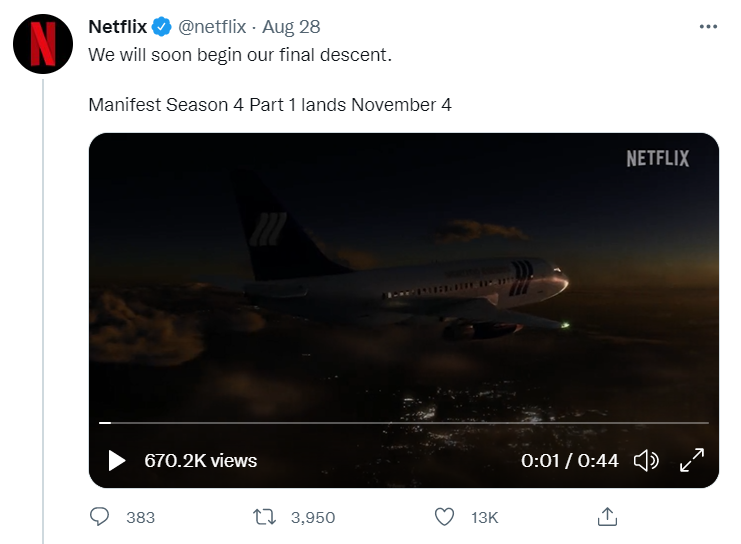
The video above is a teaser for the 4th season of the show Manifest that Netflix published on Twitter a couple of months before the premiere. As intended, this tweet successfully created a buzz among the fans of the show, with over 2,500 retweets and 1,500 quote tweets.
Example #3: Wendy’s
Finally, we have the restaurant chain Wendy’s, famous for actively engaging with its customers on social media.
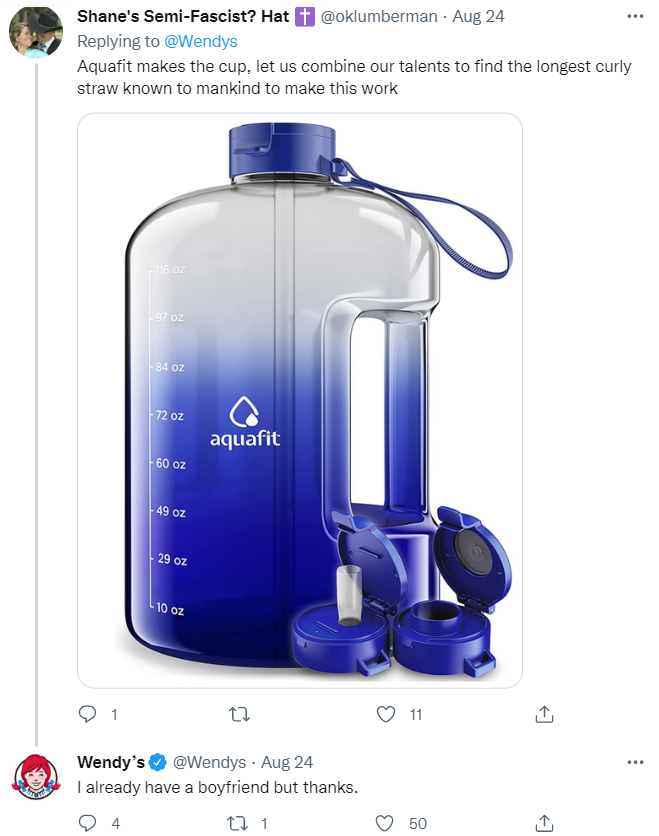
Unlike many brands that post highly formal content on their social media accounts, the social media marketing team at Wendy’s constantly makes joke posts and actively answers the questions/requests that their customers post on Twitter and other channels.
Now Over to You
Thanks to its ability to create trust in your brand and drive sales revenue, word-of-mouth marketing is a highly valuable channel that should be in the arsenal of any digital marketer.
If you liked our guide and want to learn more about digital marketing, check out the great educational content that we have on our blog.

Sona Kalantaryan is a senior digital marketer with a creative past. Big fan of high cinema and well-optimized landing pages. She authors guides by sharing the best practices and does it the right way!
